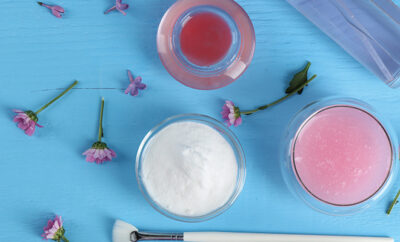
Winter Care for Your Skin
Most of us focus on skin care during the summer months, when sun and wind can dry and burn. When the temperature drops during winter months, it’s important to remember that skin may need extra attention. Indoor heat as well as the colder outdoor weather can dry out skin and lead to painful conditions ranging from cracking to dermatitis.
If you think your skin actually feels drier in fall and winter than in the summer, it’s not your imagination. Chillier temperatures cause arteries and blood vessels to narrow in an effort to conserve body heat. When blood flowing near the surface of the skin slows, the outer layers of skin become drier. Itchiness, flaking and cracking of the skin may follow.
Frequent moisturizing is the best way to combat winter’s dry skin. Dermatologists recommend using products such as CeraVe Moisturizing Cream that contain ceramides, which are fatty lipids that help skin retain moisture. Ceramides are part of the skin’s natural barrier layer that protects inner layers of skin from dry air as well as pollution and other substances in the environment. The level of ceramides produced naturally by the skin is reduced as we age, which is even more reason to replenish them.
Everyone has begun to use more hand sanitizer and wash their hands more frequently over the past few months; both of these practices can dry the skin. While it’s still important to wash frequently, the American Academy of Dermatology suggests drying your hands with a clean towel and leaving them slightly damp before applying ointment or hand cream. Don’t forget to work moisturizers into your fingertips and nails! The AAD recommends using moisturizing products that contain mineral oil or petrolatum, are fragrance- and dye-free, and are sold in tubes instead of pump bottles.
Hand sanitizers recommended by the CDC contain at least 60 percent alcohol, a substance that is very drying for skin. Although hand sanitizer itself doesn’t increase the chance of skin infection, frequent use may allow germs to invade through cracks and wounds in dry skin. Limit use of hand sanitizer to times when soap and water are unavailable and be sure to moisturize afterward.
A long, hot shower or bath on a cold winter day feels wonderful, but while you soak you may be removing natural moisture from your skin. Avoid stripping essential oils from your skin by washing with a hydrating cleanser such as CeraVe Body Wash for Dry Skin. Stick to shorter showers and baths in lukewarm water, then pat dry, moisturize and warm up afterward in a cozy towel or blanket.
Dermatologists recommend applying a thick, cream-based moisturizer to your entire body at least twice a day. This should be immediately after bathing and at least one other time. If your skin itches or looks dry, apply moisturizer to that area immediately. Lips are subject to becoming dry and chapped if you spend a lot of time in harsh weather, so don’t forget to regularly apply lip balm that contains sunscreen. If you wear lipstick, first apply balm.
Frigid outdoor weather isn’t the only threat to your skin in winter. Indoor heating surrounds you with hot dry air that also dries the skin. You can use a humidifier to put moisture back into the air. Run it in spaces where you spend most of your time, including your office or bedroom. You can also keep your thermostat set between 68 and 72 degrees to keep your home warm without drying out the air.
Preventive care for your skin is just as important in winter as summer. Dress warmly for cold weather, including a hat, gloves and scarf to limit skin exposure. Stay away from itchy sweaters and other fabrics that irritate your skin. Instead, wear soft, breathable fabrics next to your body and layer on heavier garments. If your clothing becomes wet, avoid skin irritation by changing into something dry as soon as possible.
Just as you switch your wardrobe when the weather gets cold, consider changing your facial skin care routine by avoiding astringent cleansers that contain alcohol and using a rich night cream to lock in moisture. You can also moisturize your skin from within by drinking plenty of water every day, a healthful practice throughout the year.
The dangers of sun exposure don’t disappear in winter. The Skin Cancer Foundation reports that snow reflects up to 80 percent of ultraviolet rays. Remember to apply sunscreen with SPF30 or higher before going outdoors, even on cloudy days. There may be fewer UVB rays that burn the skin, but UVA rays that penetrate more deeply and age the skin can penetrate even heavy clouds on colder days. ■
Sources: health.com, aad.org and skincancer.org.







